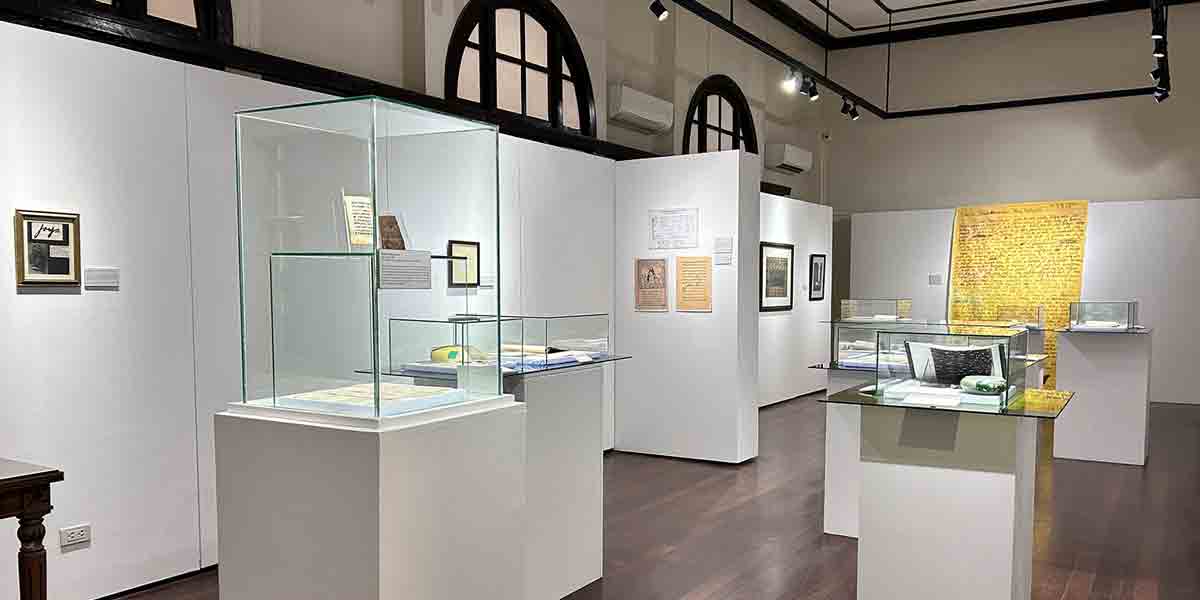By John Anthony S. Estolloso
WHO WOULD have thought that a mass for the dead can hold so much profound beauty for the living?
The evenings of November the 24th and 25th witnessed the performance of Mozart’s Requiem, as sung by the combined choirs of the University of San Agustin. Sponsored by the Gilopez Kabayao Foundation, Inc., the performance gave a rare chance for Ilonggos to reacquaint themselves with this Mozartean work, and perhaps, catch a reflective pause to come to terms with the limits of our humanity.
Figuring in the performance were the university’s choir and Troubadours together with the Coro Liturgico Agustino, accompanied by pianists – one of which was their musical director, Dr. Gerardo Muyuela – and violinists of the conservatory. With composer and conductor Beny Castillon at the helm of more than a hundred singers, the performance was a tremendous outburst of Mozartean harmony, capturing the maturing nuances of a musical prodigy at the cusp of death.
Setting the stage for the monumental performance – and perhaps to warm up the voices of the soloists – were three shorter pieces from Mozart’s repertoire of sacred music. Alto Wynn Villanueva opened the evening with the Alleluia from the composer’s Exsultate Jubilate followed by soprano Amabelle Pamocol-Castro’s Laudate Dominum, accompanied by Marian Sudaria on the flute. To cap this introduction was the ever-beloved Ave verum corpus, the old Latin communion hymn which Mozart takes as his own and transforms into a motet-like arrangement for four voices. The sonorous voices of tenor Jomel Garcia and bass Yves Gabasa lend a much darker shade to the quartet, highlighting the solemnity of the hymn.
Before delving into the performance of the Requiem, it is perhaps noteworthy to recall some of the stories that surround its composition. That it was unfinished by the time of Mozart’s death and that it was completed by one of his friends is canon in its literature. Most of us perhaps were introduced to the score by Miloš Forman’s film adaptation of Peter Shaffer’s Amadeus: admittedly, we were mesmerized by Mozart dictating the composition of the Confutatis to a befuddled Salieri. And how many tragic scenes from plays and films made use of the poignant Lacrimosa for its score?
In all appearances, the Requiem has retained its dark charms. But beyond the urbanity that surrounds the composition are its sacred meanings. Transcending the musical artistry is the mass’s essential roots in the Roman Catholic liturgy that hallows the soul before interning the corpus in the grave. Though we can admire the harmonies, the intensity of the composition, and the loveliness of its delivery, we are likewise invited to reflect on its metaphysical essence: the finitude of our humanity and our flawed mortality that seeks for mercy and redemption from the Divine.
The mass opens with the Introit. Albeit the absence of a full orchestra, Mozart’s ominous first notes were delivered with sinister gloom, and as the massed choirs intoned the terrible first words of the Requiem, the audience was slowly transported to the recurring phrase of supplication: a clamoring for salvation and eternal light for the departed. And as if to poke fun at the choir even in the most funereal of situations, Mozart gives them a fugal Kyrie next, a technical test of harmony for massed voices to deliver.
The Sequence followed with its iconic Dies irae. Despite the lack of timpani to hammer the intense depth of the lyrics, the gravitas of the poetry was undiminished: the end of man is a day of wrath and gloom indeed. To reinforce this image of apocalyptic judgment, the Rex tremendae continues this narrative of abasement, up to the frenzied Confutatis and the poignant Lacrimosa. Most familiar to audiences would be these two: the former because of that Forman film, the latter for its march-like dirge, imitating a metaphorical slow walk to the grave.
This theme of mortality inundates the entire composition. For the Catholic requiem mass is a somber and tenebrous affair and throughout the liturgy, little of beatific bliss is seen: only the wretchedness of humanity and its need for deliverance wells up time and again in incessant waves of pleas.
The Sanctus and Agnus Dei shift the tone from one of supplication to that of adoration. In acknowledging the presence of the Divine, the audience through the music was made to behold the sacrificial lamb led to slaughter: for a fleeting moment, Mozart’s mass deviates from mortal elegy to sacred ode. Yet as if to fall back to the depths of the grave, the last verses of the communion revert to the original theme of mortal finitude and divine justice.
The final verses were an echo of appeal for eternal light. The choir wells up, gathering intensity and in a final sustained crescendo, it fades. There is no Amen; it just ends.
*****
No silence followed the dying of the final notes during those evenings: only thunderous applause and standing ovations. Who would have thought that a Requiem can hold so much profound beauty for the living?
[The writer is the coordinator of the Social Studies program of one of the private schools in the city. Photo used is from K.D. Sumbing; the promotional poster is from the university.]
























